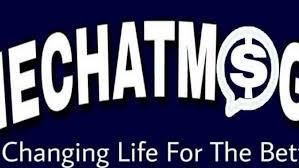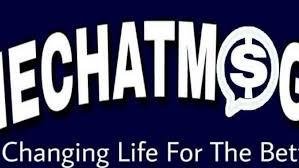In construction, numbers aren’t just numbers—they’re the difference between winning a project and walking away empty-handed, between profitability and loss. Nowhere is this more evident than in the delicate balance of estimating for profit versus working within a developer’s budget.
While developers aim to maximize return on investment (ROI) and control costs, estimators are tasked with delivering accurate, comprehensive cost projections that ensure quality and profitability. If you're in construction estimating, understanding how to navigate these competing priorities is crucial.
In this guide by AllstateEstimation, we explore how to estimate effectively when working with developers, how to maintain your margin without pricing yourself out of the game, and how strategic estimating practices can support long-term growth.
Why Estimating for Developers Requires a Unique Approach
Unlike owner-operators or public sector clients, developers are often working with strict financial models, investor expectations, and tight construction schedules. They rely on accurate estimates to:
-
Secure financing
-
Validate feasibility
-
Evaluate profit potential
-
Develop marketing and sales strategies
This means they often come to the table with a pre-set budget, sometimes even before a design is finalized. As an estimator, you're now expected to provide real-world numbers that align with conceptual expectations—and still allow for construction to proceed profitably.
Profit-Based vs. Budget-Based Estimating: Understanding the Difference
Let’s break down the two approaches:
Estimating for Profit
This method ensures that all costs—both direct and indirect—are covered with a healthy profit margin included.
Includes:
-
Market-based pricing for materials and labor
-
Equipment, overhead, and risk contingencies
-
Profit margins reflective of business goals
Best used when:
-
You’re submitting a hard bid or fixed-price contract
-
Scope is well-defined
-
The client expects high-quality output over cost-cutting
Risk: May exceed the developer’s target budget, leading to potential project delays or rejection.
Estimating to Match a Developer’s Budget
Here, you work backward from a predefined number to determine what scope and specifications are possible.
Includes:
-
Target Value Design (TVD)
-
Strategic substitutions of materials or methods
-
Value engineering
-
Minimal contingencies
Best used when:
-
You’re in early project planning
-
Scope is flexible
-
Developer is price-sensitive and ROI-focused
Risk: Can lead to underestimating true costs or cutting corners that impact quality or profitability.
Finding the Balance: Strategies from AllstateEstimation
Balancing these two approaches requires skill, communication, and the right tools. At AllstateEstimation, we’ve helped contractors, developers, and architects across the U.S. strike this balance and win more projects with better margins.
Here are five key strategies we recommend:
✅ 1. Collaborate Early in the Process
One of the most effective ways to align your estimate with the developer’s budget is to get involved during pre-construction or even concept development. This allows you to influence decisions around:
-
Design efficiency
-
Material selection
-
Site planning
-
Project phasing
Early collaboration enables value engineering and avoids costly redesigns later.
✅ 2. Build Transparency Into Your Estimate
Developers don’t just want a number—they want justification. Break your estimate into clear categories:
-
Sitework
-
Structural
-
Mechanical, Electrical, Plumbing (MEP)
-
Finishes
-
Contingencies
-
General conditions and overhead
This transparency allows developers to see where their money is going and where savings can be made—without compromising your profit.
✅ 3. Apply Real-Time Market Data
Cost databases and historical estimates are useful, but prices fluctuate. Material costs, labor shortages, tariffs, and fuel prices all affect budgets in real time.
AllstateEstimation uses the latest regional cost data, supplier quotes, and labor market trends to ensure estimates are grounded in reality—making them more credible to developers and investors alike.
✅ 4. Use Value Engineering (the Right Way)
True value engineering isn’t just cutting costs—it’s about finding cost-effective alternatives that preserve functionality and aesthetic value. This could include:
-
Switching from steel to engineered wood where structurally viable
-
Using prefabricated components
-
Leveraging energy-efficient systems with long-term ROI
We help clients at AllstateEstimation propose substitutions that reduce budget pressure while maintaining project intent.
✅ 5. Leverage Professional Estimating Services
If your in-house team is stretched or you’re unsure how to approach complex developer-driven projects, partnering with a third-party estimating firm like AllstateEstimation can be a game-changer.
We provide:
-
Independent, third-party estimates tailored to developer budgets
-
Fast, accurate takeoffs and cost breakdowns
-
Feasibility studies for pre-construction planning
-
Support for contractors, architects, and developers alike
By outsourcing estimating, you ensure objectivity, accuracy, and scalability—all without compromising internal resources.
Common Challenges When Estimating for Developers
⚠️ 1. Unrealistic Budget Expectations
Developers may have budget targets not aligned with current market conditions. Don’t be afraid to explain why certain cost assumptions are off.
⚠️ 2. Scope Creep
As projects evolve, so does the scope. Without change management processes in place, your original estimate may quickly become outdated or inadequate.
⚠️ 3. Undervaluing Contingencies
It’s tempting to strip down contingency allowances to meet a budget, but this often backfires mid-project. Smart estimators factor in unknowns without ballooning the estimate.
Case Example: How AllstateEstimation Helped a Developer-Contractor Team Win a Mid-Rise Project
A mid-sized general contractor approached AllstateEstimation for help with a mixed-use, 7-story development. The developer had a firm budget ceiling based on lender constraints, but the initial design was coming in 18% over budget.
Our team:
-
Conducted a full cost takeoff based on the drawings
-
Identified material substitutions for structural framing
-
Reduced MEP costs through prefabricated system recommendations
-
Helped reallocate contingency more effectively
The final estimate came in 2% under budget—with scope and quality preserved—and the contractor won the project.
Conclusion
Estimating for profit and estimating to meet a developer’s budget aren’t mutually exclusive. With the right strategy, open communication, and support from professional estimators, you can meet client expectations while protecting your margin.
At AllstateEstimation, we specialize in helping contractors and developers align their financial goals with real-world construction costs. Whether you’re pricing a single-family home, a high-rise, or a complex infrastructure project, we help you deliver estimates that are accurate, competitive, and built for success.



